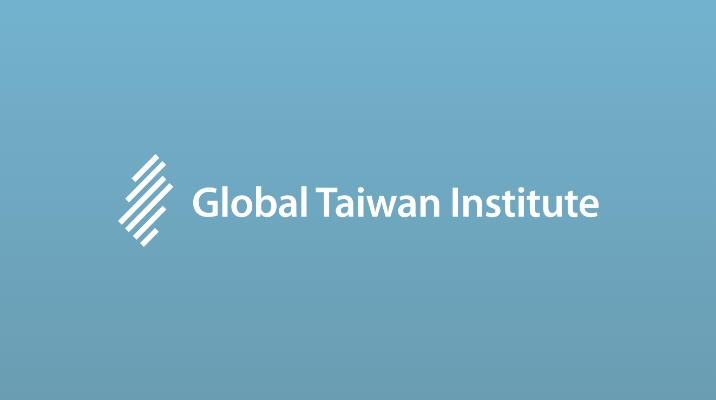Following the Chinese Communist Party’s (CCP, 中國共產黨) failed attempts to use military intimidation to influence the political orientation of Taiwanese people from 2022 to 2023, the CCP has now switched to “silent exercises” that more subtly undermine the Taiwanese government. Once the CCP realized that their military exercises might boost Taiwanese public support for the Democratic Progressive Party (DPP, 民進黨), the CCP has now shifted to conducting low-profile drills to create the narrative that the DPP itself is fabricating a climate of fear. An analysis of online engagement patterns indicates that when People’s Liberation Army (PLA) warplanes and vessels encircle Taiwan, they inadvertently amplify the DPP’s digital presence and reinforce Taiwanese national identity. However, the CCP’s recent shift to low-profile military activities, often relayed through third-party sources or announced by Taiwanese authorities themselves, has indirectly fueled the spread of conspiracy theories online.
Online Presence Analysis and the Distribution of Internet Usage among Taiwanese Citizens
Online presence analysis refers to the use of artificial intelligence-based (AI) semantic analysis technology to measure online discussion levels regarding specific issues while simultaneously conducting sentiment analysis to evaluate positive and negative emotions in content. This technology can be used to measure various aspects of a person, an event, or an issue’s online presence, including exposure level, discussion frequency, and public favorability.
According to Digital 2023 statistics, 95 percent of Taiwanese people regularly access the internet via mobile phones. The entire island has approximately 20.2 million social media platform users—representing 84.5 percent of the total population and ranking 10th globally in usage rate. Among the social media platforms, the messaging application LINE leads with 90.7 percent usage, followed by Facebook at 85.3 percent, Instagram at 65.3 percent, Messenger at 60.3 percent, and TikTok at 36 percent.
Due to the anonymous nature of the internet, people’s expressions online tend to be unfiltered, especially in direct responses to newsworthy social events. The emotions revealed through these responses are often more authentic than those obtained through traditional interviews. Big data text analysis tools can help researchers conduct real-time sentiment analysis on social media or news platforms, effectively exploring public attitudes toward specific issues. While the demographic distribution of internet users tends to skew toward younger populations, online sentiment analysis has become an indispensable reference tool for both business promotion and election strategy analysis in Taiwanese society. Overall, online sentiment analysis can be used to gauge the direction of public opinion in Taiwan.

Figure: The search frequency of terms related to PLA military exercises and the DPP from 2022-2021 (Figure source: Google Trend)
The Correlation Between PLA Military Exercises and Online Presence During the Tsai Administration
During President Tsai Ing-wen’s (蔡英文) second term, US House Speaker Nancy Pelosi visited Taiwan and declared “we will not abandon our commitments to Taiwan.” In response, China announced week-long military exercises and established no-fly zones around Taiwan. During this time, when global attention was focused on both Pelosi and the CCP’s military response, the narrative shifted significantly. On April 6, 2023, President Tsai met with House Speaker Kevin McCarthy at the Ronald Reagan Presidential Library as part of her “Democratic Partners for Common Prosperity Journey.” By invoking Reagan’s famous quote—“We Are Stronger When We Are Together“—Tsai captured headlines across major US media outlets. In the end, Tsai’s diplomatic engagement contributed to the domestic image of her being “tough on China.”
The Relationship Between PLA Military Exercises and Online Presence During the Lai Administration
During the administration of President Lai Ching-te (賴清德), the Lai Administration was able to leverage statements that were deemed controversial by the CPP for media coverage and PLA military exercises actually helped the DPP generate online attention and stimulate nationalist sentiment. During the CCP’s Joint Sword-2024A and Joint Sword-2024B exercises directed against Taiwan, Taiwanese government broadcasts of Taiwan’s military defense status helped strengthen public support for national security policies. However, the two military exercises generated distinctly different online responses.
The May 23-24 Joint Sword-2024A (聯合利劍2024A) military exercises followed Republic of China (ROC) President Lai’s inauguration speech and were conducted in response to rhetoric used by Lai that was consistent to the concept of “Two Sides, Two Constitutions.” After President Lai’s inauguration, the Chinese Communist Party pressured Taiwan with the rapid implementation of Joint Sword-2024A and diplomatic suppression. Subsequently, the CCP announced sanctions on 12 US military companies and ten executives involved in arms sales to Taiwan. It then publicly characterized President Lai’s statements as dangerous signals threatening cross-Strait peace and stability. According to online search statistics, Lai’s speech overshadowed Beijing’s military exercises and Lai’s favorability among the Taiwanese public also increased. Taken together, the data shows that the inauguration speech and exercises sparked Taiwanese nationalist emotions and boosted the DPP’s online presence.
The Joint Sword-2024B (聯合利劍2024B) military exercises followed Lai’s National Day speech, which reiterated the non-subordination relationship between Taiwan and China and China’s lack of authority when it comes to representing Taiwan. Despite considerable discussion about the exercises online, the CCP did not conduct the exercises right away and officially announced that they would last only one day. (Still, the PLA Navy stayed in nearby waters, and it took three days for the situation to normalize.) As a consequence, the DPP failed to generate the expected online attention regarding the Joint Sword-2024B exercises, and both the resulting nationalist sentiment and negative emotions toward the CCP were not as high as during Joint Sword-2024A. Ultimately, public support for the DPP dropped 5 percentage points in October polls in comparison to May.

Figure: Internet presence of terms related to PLA military exercises and President Lai. (Figure source: Opview)
The differences in scale and timeframe between the first and second Joint Sword exercises are the main reasons behind their differing online impact. This time gap allowed public passion for the speech to cool and created uncertainty about a PRC military response, which also likely caused people to view the exercises as an isolated event. The delay of the PRC’s response reduced attention on the Taiwanese authorities, effectively “silencing” their presence.
Silent Exercises and Cognitive Warfare: China’s Evolving Strategy Against Taiwan
After the Joint Sword 2024B exercise, China shifted its cognitive warfare strategy by restricting information releases and selectively leaking genuine and fabricated details through third parties. This approach has created more uncertainty for the Taiwanese government, which has struggled to anticipate Beijing’s next move. According to theories of power and communication, silence is often used as a tool of control: one party’s act of withholding information (remaining silent) can influence the other side’s behavior by regulating what and when information flows.
In December 2024, a Reuters report mentioned the possibility of a Joint Sword-2024C exercise taking place during President Lai’s visit to Taiwan’s diplomatic allies. However, until December 14, the only official notice from Beijing concerning a response was an announcement reserving seven zones of airspace near Taiwan. Meanwhile, it was Taiwan’s government that claimed that large-scale PLA drills were under way in the Western Pacific. Many observers cross-checked publicly available data from the United States and Japan, which raised doubts about the accuracy of the Taiwanese government’s claim. Under these uncertain circumstances, unfavorable rumors spread and undermined public confidence in the government.
On February 26 of this year, the PLA conducted an unannounced live-fire drill off the coast of southwestern Taiwan. The drill coincided with the severing of a Taiwanese undersea cable by a Chinese vessel earlier that month. These incidents highlight China’s evolving tactic of “silent exercises,” which, although more opaque, pose a tangible and escalating threat.
Conclusion
From the above analysis, it can be concluded that the CCP has shifted its cognitive warfare strategy against Taiwan—from direct military intimidation to using silence as a psychological warfare tactic. It can be surmised that the CCP seeks to deprive Taiwan of clear information, creating anxiety and pressure that lead to misjudgments and foster skepticism about the accuracy of government-released information.
The main point: China’s cognitive warfare approach has shifted from overt military intimidation to “silent exercises” and selective information leaks, fueling uncertainty and rumors in Taiwan. This tactic leverages silence as a tool of control—undermining public confidence, heightening anxiety, and causing doubts about official information—and thereby advancing the CCP’s strategic aims.





